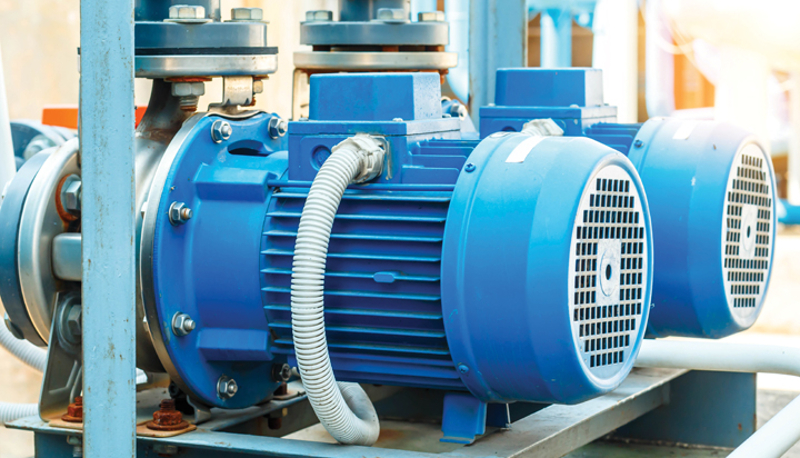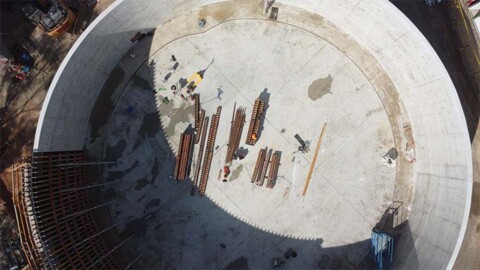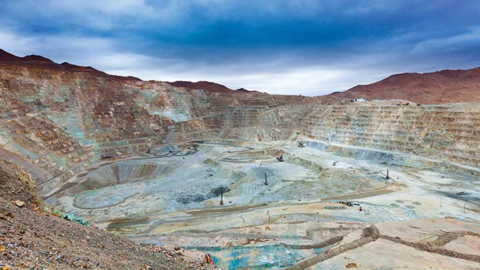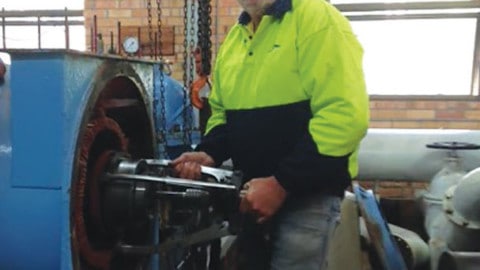By Stephanie Barker, Assistant Editor, Pump Industry Magazine
As we step into another exciting year, the eleventh annual State of the Industry report reflects on how the pump industry fared in 2023 and looks at what to expect in the year ahead. Despite the many challenges facing the industry, 2024 is being ushered in with optimism and is shaping up to be another positive year.
It’s always tough to follow a big milestone – with the State of the Industry report celebrating a decade of being in print in 2023, 2024 has some big shoes to fill. Not only that, 2024 follows some of the toughest years faced by the pump industry in recent memory – the aftershocks from COVID, particularly in relation to the impacts of lockdown on staffing and the global supply chain, are still being felt throughout the industry.
There was also the huge rise in inflation and interest rates this year that left many businesses and households feeling the pinch, with no sign yet that the economic strain is likely to ease anytime soon. The 2023 State of the Industry report was somewhat of a mixed bag.
Despite an overwhelming majority of companies either meeting or exceeding their expected business growth in 2023, the outlook for the broader industry was not quite as positive with only 62.5 per cent of respondents reporting that they felt the outlook for the pump industry in 2023 was bright.
Sector growth was relatively modest in 2023, perhaps influencing the outlook for 2024. Predictably, the water and wastewater, mining and manufacturing sectors experienced the highest growth, while industries including power generation and plastics and rubber lagged behind.
Despite these many hurdles, the results for State of the Industry 2024 are overwhelmingly positive. Some sectors saw rapid, unpredicted growth, while the vast majority of companies reported meeting or exceeding predicted growth for the year. Let’s dive in to the nitty gritty and take a look at performance across the industry.
State of the Industry responses 2024
What is your company’s outlook for 2024?
 The overwhelmingly positive trends from 2023 have continued, as seen in Figure 1. 79.55 per cent of respondents reported a positive outlook for their business for the year ahead, less than ten per cent below last year’s figure of 87.5 per cent. While this figure is lower than that reported last year, the amount of negative responses has almost halved from 2023, down to 3.41 per cent from 6.25 per cent.
The overwhelmingly positive trends from 2023 have continued, as seen in Figure 1. 79.55 per cent of respondents reported a positive outlook for their business for the year ahead, less than ten per cent below last year’s figure of 87.5 per cent. While this figure is lower than that reported last year, the amount of negative responses has almost halved from 2023, down to 3.41 per cent from 6.25 per cent.
This paints an overall picture of a very positive outlook. While positive responses may have fallen, the fact that negative responses have fallen by almost 50 per cent points to a significant change – few businesses are worried or feeling negatively about the future. The fact that businesses overall remain positive in their outlooks for the coming year proves that even in tough economic times, the pump industry remains strong.
Neutral responses saw a significant increase, with 14.77 per cent of respondents saying that they felt neutral about their business’ outlook – as opposed to 2023 where neutral responses totaled 3.13 per cent. Unsure votes, however, fell from 3.13 per cent to 2.27 per cent. One likely explanation for this trend is that coming out of COVID, many businesses felt increasingly positive and secure in the outlook for 2024, while some were still experiencing lingering feelings of uncertainty.
Now that the dust from COVID has settled somewhat, continuing on a steady course may actually be desirable for many businesses. With positive and neutral votes combining to make up 94.32 per cent of responses, the outlook for businesses is trending towards being very positive and very secure. Despite the rising cost of living, it’s fantastic to see that businesses are, on the whole, feeling that the outlook is bright for the pump industry.
What industries does your company operate in?

When we look at the industries that respondents operate in (Figure 2), there are clear frontrunners driving business in the industry. Water and wastewater was the industry the most companies operated in, with 85.71 per cent of respondents reporting working in this sector.
Manufacturing, irrigation, mining, oil and gas, food and beverage, and power generation were also primary sectors with more than half of all respondents reporting working in these sectors. When looking at these figures in relation to positive outlooks for pump businesses, we can get a clearer picture of what sectors opportunities are likely to be found in.
Evaluating company performance in 2023
Did your company’s performance in 2023 meet, exceed or fall short of expectations?

The rising cost of living has had an impact on not just the pump industry, but every industry in Australia. As interest rates, fuel prices and the costs of labour and materials skyrocket, it comes as no surprise that an increased number of respondents said their 2023 performance fell short of expectations.
However, the industry has weathered these impacts well – 30.68 per cent responded that they had exceeded expectations, and 51.14 per cent said company performance met expectations. It’s heartening that even in times of economic uncertainty, businesses are still able to meet their expected projections.
Many companies attributed their success to sales being up, increased distribution and expanding markets. Several responders also noted internal logistics as having a direct impact on whether expectations were met.
One company said that its “excellent team in manufacturing and specialised sales team” was what steered the company in the right direction. Conversely, logistics proved an issue for some businesses. Following the pandemic and particularly the effects of lockdowns, staffing has been a critical issue for many industries. Specialised workers in particular can be difficult to find, with headhunting and competition for staff at an all-time high.
One responder noted “a complete lack of manufacturing staff availability” as the most significant factor for lower-than-expected company performance. While the number of businesses exceeding expectations is trending down from figures reported for 2022, there are several factors that are likely impacting these numbers.
Many respondents noted that broader economic issues impacted performance. The number of respondents who said their company’s performance fell short of expectations rose this year to 18.18 per cent, almost tripling the previous year’s 6.25 per cent. However, it’s important to note that the 2022 figures were unusually low in terms of companies not meeting expectations. This is likely a direct impact of COVID, with businesses emerging from global lockdowns able to embrace a solid year of performance.
Did your company’s performance meet, exceed or fall short of expectations?
 As we can see in Figure 4, with the exception of COVID years, previous reports showed that more than 20 per cent of companies fell short of expectations. In context, this year’s figure of 18.18 per cent is trending down, suggesting that on the whole, companies have been performing well.
As we can see in Figure 4, with the exception of COVID years, previous reports showed that more than 20 per cent of companies fell short of expectations. In context, this year’s figure of 18.18 per cent is trending down, suggesting that on the whole, companies have been performing well.
Several respondents also noted that destabilisation from multiple wars around the world had affected the global supply chain, including one responder who noted, “Due to economic challenges and the occurrence of war in certain regions of the country, the company has been unable to achieve the anticipated growth.”
The weather also played into company performance, with one respondent noting retail sales and dry weather as key elements. Another responder said, “Weather conditions caused dry seasons which took longer than ever, and coal prices dropped down.”
The outlook for the pump industry in 2024
What is the outlook for the Australian pump industry in 2024?

There are many factors that are likely to contribute to the outlook for the broader pump industry. These include personal factors, like company performance, and broader factors, such as the cost of living and world economics. Similar to the 2023 survey, the difference in positive outlook for the pump industry as a whole was lower than individual company expectations, with 63.64 per cent of respondents reporting a positive industry outlook (Figure 5).
One important thing to note, however, is that this figure is the highest positive response on record. Positive responses are up more than one percentage point from the 2023 survey, and are up significantly from the numbers reported from 2014–2019 (Figure 6).
These figures indicate that the pump industry as a whole is continuing to grow and thrive in Australia, despite facing economic and logistic difficulties. To see positive outlooks increasing is a real testament to the industry’s ability to adapt in challenging times and grow in new directions.
What is the outlook for the Australian pump industry in the next year?

Negative outlook responses also fell, down to 2.27 per cent from last year’s 3.13 per cent. The fact that negative outlooks have experienced a year-on-year decline suggests that opportunities for business are strong. Neutral responses fell to 18.18 per cent from 31.25 per cent the previous year. Interestingly, unsure responses had a huge increase – up to 15.91 per cent from 3.13 in 2023.
Looking at the responses as a whole, as well as responses and trends from previous years, a picture emerges of an overall very positive outlook for the pump industry. There is a growing contingent of uncertainty as the world continues to experience changes in key areas like economic stability, global supply chain and technological shifts. However, only a very small percentage of respondents feel that the industry outlook is negative – a fantastic sign for the year ahead.
Evaluating sector growth
To better understand the key areas that contribute to these responses, further analysis is important. Expected versus reported growth, broken down by sector, provides a thorough snapshot of the key factors impacting the pump industry and sheds some light on the reasons companies may or may not have met the expected growth projections from the previous year.
Survey respondents were asked to provide details about the volume of work experienced over key sectors – including mining, water and wastewater, and irrigation – over the past 12 months. We then compared these responses to the growth expectations reported in last year’s State of the Industry survey to see how they stacked up.
Expected vs reported sector growth

As seen in Figure 7, side-by-side comparison of expected versus reported growth shows that all sectors exceeded their growth projections according to respondents, with the exception of the paper and pulp industry. This is a fantastic result across the board, reflecting a very healthy and robust pump industry in Australia.
It is also particularly good to see following a difficult year in 2022, a year where all sectors fell short of their expected growth, according to respondents. Water and wastewater and mining were the sectors with the highest expected growth in the 2023 survey. But both sectors outperformed even these high expectations as we can see in Figure 7, highlighting just how critical these sectors are for the pump industry.
Interestingly, the oil and gas and power generation sectors significantly outperformed expectations. Growth in the power generation sector was almost ten times higher than expected, showing what great potential there is in this sector. Oil and gas growth almost quadrupled what was expected, highlighting another important sector for pump businesses.
The plastics and rubber industry had the lowest expected growth of any sector – however, it too outperformed expectations with modest growth. Pulp and paper was the only sector to fall short of predictions, and also the only sector to report negative growth. However, only 38.1 per cent of businesses reported working in this sector, so the impacts of negative growth were minimised for many businesses.
Reported sector growth by year 2019-2023

When compared to the reported growth from previous years (Figure 8) we can see that 2023 was a record year for growth, with many industries reporting the highest growth on record. These industries included mining, oil and gas, plastics and rubber, manufacturing, power generation, building services/HVAC, food and beverage, and irrigation.
Pulp and paper was again the only sector to report the lowest growth on record, perhaps highlighting how much this sector has changed over the years and reflecting how this sector has shrunk, not only as relative to the pump industry but as an industry itself.
The oil and gas and power generation sectors also significantly outperformed previous years, indicating that these sectors may be experiencing a boom that has flow-on effects for the pump industry. All in all, this year’s reported growth has greatly exceeded expectations, which is very much in line with the positive sentiments reported for both industry and company outlooks.
Sector growth predictions for the year ahead
How do you expect the volume of work for your business in the following sectors to change in 2024?

It comes as no surprise that the exceptional growth experienced this year has led to optimistic predictions for 2024. Continuing the trends of previous years, the water and wastewater, mining and irrigation sectors are predicted to experience the highest growth in 2024.
We are seeing a big increase in the expected volume of growth in the irrigation sector, with the average growth expected to be more than double that of what was expected from 2019–2023. One likely reason for this is the increasing national focus on renewables and sustainability. Many respondents also noted that clean energy projects were likely to present opportunities for Australian pump companies in 2024.
One respondent said, “Water and wastewater treatment has become more mainstream compared to three to five years ago. People are more conscious of what they are using water for and what is in the waste and where the waste is going.” Another said “more opportunities to get involved with energy efficient and sustainable pumping projects” was likely to have an impact on business opportunities in the coming years.
Predictions for growth in the power generation sector increased significantly from the previous years’ numbers – however, the expected growth for 2024 is still lower than the reported growth for 2023. It’s an interesting contradiction that businesses reported huge growth in this sector for 2023, yet still remain cautious in predictions for the coming year.
Like irrigation, power generation is another sector that is experiencing a boom thanks to a shift in focus to renewable and sustainable energy. More than a quarter of responders said that projects involving technologies like hydroelectricity, carbon capture and hydrogen storage were shaping the industry in a new way. One respondent identified “investment in clean fuel technology and upgrades to existing energy infrastructure ahead of the improved availability of renewables” as a major opportunity for Australian pump companies in the next 12–24 months.
Another said that “more opportunities to get involved with energy efficient and sustainable pumping projects” was likely to have a positive impact on the pump industry in the coming year. It will be very interesting to see in next year’s State of the Industry figures how the power generation sector performs and whether this sector continues to experience the exponential growth seen in 2023.
Another interesting prediction is the growth of the paper and pulp sector – again the highest on record despite the sector yielding negative growth and falling well below expectations in 2023. This could go one of two ways in 2024: either the sector has seen a temporary decline and the next 12 months will return positive growth, or we will see the trends of 2023 continue and the optimistic predictions may well fall short of the reality.
In a digital age, it’s no surprise that an analogue industry would experience decline – we will have to wait and see what lies ahead for 2024.
End-user experience
It’s important to consider the experience of the end-user when looking at any industry. This year, almost a third of responders were pump end-users, specifiers or purchasers, giving us a unique insight into the factors that influence end-users. It’s great to see Pump Industry is still a popular choice of information for pump users, with almost two-thirds of end-users noting it as a primary source of information. We asked end-users what areas related to pumps they would like to better understand, which shed some light on potential knowledge gaps.
Where do you get your technical information on pumps from?

Many responders said that detailed information about specific pumps would be of great use, including details such as capacity, performance, pump behaviour and characteristics. One user said they would like to see “more ‘Cheat Sheets’ on pumps – design, manufacture, inspection, testing, codes and standards, lessons learned, checklists, etc.”
This could present a great opportunity for pump companies to perhaps collate and produce this information when looking to attract end-users. Understanding the pros and cons of different pump types is something that is often highlighted as an area that end-users would like to better understand. Wet well vs dry well use in particular was acknowledged as an area that users would like to better understand by many responders.
When asked ‘What is the most important consideration for you when choosing pumping equipment?’ there was one clear answer: reliability. Efficiency was also an important factor for most respondents, while cost concerns were only front-of-mind for a handful of respondents. These answers show that ultimately, users are not afraid to spend more for quality pumps.
Analysing predicted impact of potential factors
How do you expect the below factors to impact the Australian pump industry in 2024?

Value of the Australian dollar
The value of the Australian dollar plays a big role in the success of the pump industry. Despite some turbulent times for the Australian dollar in recent months and years, 77.36 per cent of respondents said that they believed it would have a positive impact on the pump industry in 2024.
This is quite a departure from the 2023 survey, where only 16.67 per cent of respondents felt the Aussie dollar would have a positive impact on the industry and 62.5 per cent felt it would have a negative impact. It’s interesting to note such positivity, coming at a time when the dollar has experienced a slight decline in value on world markets.
One explanation for this is that, following a tough economic year with high inflation and increased interest rates, the outlook for 2024 is expected to return to a more steady, robust economy. This figure may also be influenced by Australia’s close trading relationship with China, where our dollar remains strong and steady.
Inflation and cost-of-living increases
It will come as no surprise that inflation and increased cost of living are predicted to have a negative impact in 2024. Australia’s annual inflation rate is currently 5.4 per cent, its highest level since 2011. Finder’s cost-of-living pressure gauge, which measures economic strain, reached 79 per cent at the end of November, determining that Australians were at an ‘extreme’ level of economic strain.
Some relief is expected to hit in 2024, however it is unlikely to be in the first half of the year with some experts predicting another interest rate rise in February bringing the rate to 4.60 per cent. The general consensus is that inflation will ease in mid-to-late 2024, with interest rates expected to be lowered in December 2024.
The 2023 survey predicted that rising interest rates, increased cost of living and supply chain issues would be one of the key challenges that the industry would face in 2023. We asked whether respondents did indeed find this to be the case, and whether it was expected that these factors would continue to affect the sector over the next 12 months.
While the majority of respondents said that they did find these to be key challenges in 2023, quite a few noted other challenges as being bigger hurdles. One responder noted, “The biggest issue facing our business was supply chain availability. I see this as our biggest issue over the next 12 months.”
One responder said, “The mining industry is strong currently, with huge prospects in all sectors. Only the steel industry is suffering with the closure of coal-fired power stations.” Another said “There may be a period or two of slow sales, but overall it will be work that will still need to be done.”
Several respondents said that they believed 2024 was likely to be tougher than 2023 in respect to interest rates and the cost of living, with one respondent noting, “I think we will see more of these impacts in 2024.” While these predictions for 2024 may sound grim, it’s important to note that despite a tough and challenging year inflation-wise in 2023, most companies in the industry still reported growth.
While this may not be enough to entirely mitigate the impacts of inflation and the rising costs of living, it is a sign that the industry will continue to drive business growth despite these factors. Further, almost two-thirds of respondents predicted that interest rates were actually likely to have a positive impact on the industry in 2024. This indicates that while times may be tough within Australia, global interest rates are balancing out some of this difficulty for Australian companies.
Investment in major projects
Continuing a trend from the 2023 survey, respondents noted that major projects approved and/or underway were likely to have a positive impact on the sector in the coming year. It comes as renewable energy and clean water projects were front and centre of both federal and state budgets this year, which is encouraging for the industry.
The Federal Budget 2023-24 highlighted Australia’s $120 billion infrastructure pipeline and sustainability projects as key areas of development, with major project funding including:
• $2 billion for the Hydrogen Headstart initiative, supporting the biggest green hydrogen projects to be built in Australia
• $38.2 million for a Guarantee of Origin scheme, which will certify renewable energy and track and verify emissions from clean energy products – in particular hydrogen
• Funding for the initial auctions of the Capacity Investment Scheme with the Commonwealth underwriting investment, which will bring on new supply of clean, dispatchable power across the country
• $46.5 million to the Australian Energy Regulator to regulate energy markets and protect consumers through the transformation
• $12 billion of its $20 billion investment in Rewiring the Nation to transformational transmission projects, including:
» $1 billion in Tasmania’s Battery of the Nation projects
» $1.5 billion towards Renewable Energy Zones and offshore wind in Victoria
» $4.7 billion to unlock critical transmission in New South Wales
» $5.6 million for further work before the end of 2023 on the best ways to leverage Australia’s competitive strengths in renewable energy, critical minerals and highly skilled workforce to accelerate our other clean industrial and manufacturing capabilities
Clean, renewable energy and water was a major focus for state budgets as well. In New South Wales, the scrapping of the project to raise the wall of the Wyangala dam at Cowra was among some of the budget cuts, potentially impacting the industry. The Queensland state budget included a $1.7 billion spend on water infrastructure and planning.
An extra $440 million, on top of $100 million already committed, was committed to progress the upgrade and raising of the Burdekin Falls Dam, the state’s largest water storage asset. $116.4 million was also allocated to continue pre-construction activities prior to major construction works on other water infrastructure projects commencing late 2024.
Victoria’s budget also detailed some big spending on water infrastructure, including:
• $10 million Green Links fund, protecting Melbourne’s urban waterways
• $12.4 million towards opening up new opportunities for people to enjoy recreation at Tarago Reservoir
• $1.2 million further investment to continue the benefits achieved through the Central and Gippsland Region Sustainable Water Strategy, including the Community Rebate Program and the community housing retrofit program
Western Australia’s water budget focussed on the works at the new Alkimos Seawater Desalination Plant, with $65.3 million in funding committed to this project alone.
Digitisation, IoT and the rise of AI technology
Digitisation, the Internet of Things (IoT) and a rise in AI technology are predicted to have a largely negative impact on the pump industry in 2024, with only a small proportion of respondents believing these technologies would positively impact the industry. This is an interesting response, as these technologies have proved useful in some circumstances for pumps. In most cases, these technologies are used in tandem with traditional pump equipment, not in place of.
However, in the longer answer section, when asked what opportunities energy efficiency, pump performance management and/or smart technology and digitisation would provide businesses in 2024, the responses were more positive. One responder pointed to the increased awareness of carbon emissions as a factor in the uptake of smart pumps, noting “Greater opportunities to sell the correct products to the end user. End user to have more awareness of asset life costing and carbon emissions”.
Another responder said, “Smart pump technology is at the core of our business and an important contributor to growth.” Another said, “Depending on the client, it should pave the way for many system upgrades.” Smart pumps and IoT are becoming increasingly common, particularly in larger-scale applications for businesses.
One example is automated irrigation systems. IoT and simple AI technologies can be used with most types of irrigation pumps, enabling farms and other irrigation users to automate watering, pumping and energy storage processes. These technologies also enable a transition away from fossil fuels and non-renewable energy sources, a positive change for all.
Mining impacts and commodity prices
The performance of the mining industry is expected to have a positive impact on the pump industry in 2024, with 63.46 per cent of respondents noting that this would likely be a positive factor. It’s an interesting shift in perspective from the 2023 survey, which found an almost even divide between positive and negative expectations for the mining industry’s impact on the pump industry.
One reason for this change is likely to be increased investment in mining on state and federal levels, particularly in relation to critical minerals. The Federal Budget 2023–24 includes critical minerals spending of:
• $57.1 million for the established Critical Minerals International Partnerships Program, aimed at stepping up international engagement, to attract investment from like-minded partners and accelerate projects of strategic interest
• $21.2 million to ensure the ongoing operations of the Critical Minerals Office – driving policies, programs and international engagement
• $2.2 million for the Treasury to establish data analysis capabilities to track foreign investment patterns and compliance in the critical minerals sector
In Western Australia, where the mining and resources sector drove a $4.2 billion surplus for 2022–23 accounting for 29.5 per cent of government revenue, spending on mining continues to boom. Western Australian State Budget 2023–24 funding included:
• $40 million for the Sustainable Geoscience Investments package to accelerate critical minerals discoveries, assisting the state in meeting the demand for minerals used in technologies such as electric vehicles, energy storage and batteries
• $28.2 million to expand invest and trade initiatives, including establishing a new Invest and Trade Western Australian Hub in Texas to enhance the state’s presence and develop economic opportunities in the Americas
• $136 million to support critical port infrastructure – including technology investments at Southern Ports, and expansion of wharf facilities at the Port of Broome to support the export of mineral sands
• $2 million to continue the LNG Jobs Taskforce for a further two years
• $16.1 million increase in funding for the Exploration Incentive Scheme – a new geophysics co-funded programme that will drive investment into the precompetitive data and greenfield drilling that will discover the mines of the future
• $6.2 million investment in magnetotelluric data acquisition
• A $4 million increase in funding for the Minerals Research Institute of Western Australia
• $3 billion investment in Climate Change and energy storage, with $2.8 billion delivering the Collie Battery, wind power and transmission upgrades across the electricity grid that will help Western Australia decarbonise
• $1.3 million from the Climate Action Fund for four studies to underpin the work of the Heavy Industry Sectoral Emissions Reduction Strategy
• $35 million increase in investment into Strategic Industrial Areas
• $370.9 million for the Westport project
• $3.3million towards bionic lifting equipment for the Core Libraries at Carlisle and Kalgoorlie, making one of Australia’s greatest data resources more accessible
The mining surplus in Western Australia for 2023 was $2.4 billion higher than what was forecast in 2022, primarily thanks to Western Australia’s strong iron ore sector. It was a similar story in the Northern Territory, where the resources industry contributes 37 per cent of the Northern Territory GSP, with the value of the Territory’s minerals output reaching $4.9 billion in 2021–2022 – an increase of 13.6 per cent on the previous year.
Australia is edging forward as a world-leading supplier of critical minerals, and with renewable energy technologies becoming more in-demand, this sector is likely to be a strong growth area for many years to come.
Australian unemployment rate
An interesting response to the question of how trends are likely to impact the pump industry in 2024, was the majority positive vote for the unemployment rate. More than half (54.72 per cent) of respondents predicted that this would positively impact the industry, while only 22.64 per cent believed it is likely to have a negative impact.
The unemployment rate currently stands at 3.7 per cent, remaining steady in terms of both month-on-month and year-on-year comparison. Australia saw a huge jump in the unemployment rate during the height of the COVID pandemic, reaching 7.5 per cent in June 2020. The 2023 Skills Priority List showed that 36 per cent of occupations were in national shortage.
Among these are mechanical engineering drafts persons and technicians, which are professions listed as a shortage in every state in Australia. This is a trend which has continued from the 2022 Skills Priority List, which also reported these professions as experiencing shortages.
Continuing another trend from the 2022 skills list, technicians and trades workers are also listed as being in shortage across the country. However, the news is better in the construction and oil and gas industries, with concrete pump operators not experiencing a shortage in any state and gas or petroleum operators only experiencing a shortage in South Australia.
Staffing remains a divisive issue in the pump industry – many businesses reported that staffing shortages had a negative impact in 2023, whilst others reported that their teams of staff had a direct positive impact on company performance. When asked what the major challenges for pump companies in Australia in the next 12–24 months would be, many respondents reported staffing issues as a major challenge.
One responder noted that finding “skilled staff” was likely to be a major challenge for the industry in the coming years, indicating that specialised roles may become harder to fill. Several respondents also noted the high cost of labour within Australia as a challenge, with one responder acknowledging “supply of skilled pump technicians and increase in wages demands” as a big challenge in the coming year.
Perhaps the decreased unemployment rate suggests that workers will be easier to find, and skilled tradespeople may be easier to access across the board. This will be an interesting space to watch in 2024 and to see what the future holds in next year’s State of the Industry.
Opportunities for the pump industry going forward
Renewable energy boom
Renewable energy is fast becoming one of Australia’s biggest growth areas, with the Federal Government having turbo-charged investment in renewables to pave the path to net zero. Wind energy is particularly likely to take off in the coming years.
The Federal Government and Victorian State Government are joining forces to fast-track Victorian renewable energy zones and offshore wind development, with concessional financing through Rewiring the Nation of $1.5 billion for renewable projects in Victoria, including offshore wind projects, and $750 million for the Victoria-New South Wales Interconnector (VNI West) KerangLink.
Similarly, the New South Wales State Government and Federal Government have announced they would establish eight critical transmission and renewable energy zone projects in the state, with $4.7 billion funding allocated via Rewiring the Nation funding and $3.1 billion from the NSW Transmission Acceleration Facility. Projects like these present great potential for the pump industry, with opportunities for business in construction, installation, maintenance and equipment supply.
Fire pumps and distributed energy resources
Distributed energy resources – that is, energy resources that do not rely on the main power grid to provide power – are becoming increasingly important as the nation prepares for hot summers and the potential for bushfires. Personal generators, solar power and other individual energy sources can be great tools in combatting the effects of bushfires and other extreme weather events.
For the pump industry, combining tools such as irrigation pumps and firefighting pumps with distributed energy resources presents a great opportunity not only for business, but to help protect the country from bushfires. In a report released by the University of New South Wales Energy Sustainability through Knowledge and Information Exchange and Sharing project, titled Energy Resilience in Bushfires and Extreme Weather Events, distributed energy resources were highlighted as being crucial to communities battling extreme weather conditions.
Looking ahead to the next 12 months
Despite many hurdles this year, all indications show that businesses across the pump industry weathered these challenges extremely well. In a year that saw huge rises in inflation, interest rates and the cost of labour and materials, to have a vast majority of businesses still report positive growth is a testament to the industry’s tenacity and importance in the Australian economy.
Although there are challenges likely to be faced in the coming year, there are also a lot of positives to look forward to – increased investment in critical minerals mining, renewable energy infrastructure and irrigation is likely to present some great business opportunities across the industry. And with interest rates likely to begin to fall by late 2024, it’s set to be another winning year for the pump industry.

















